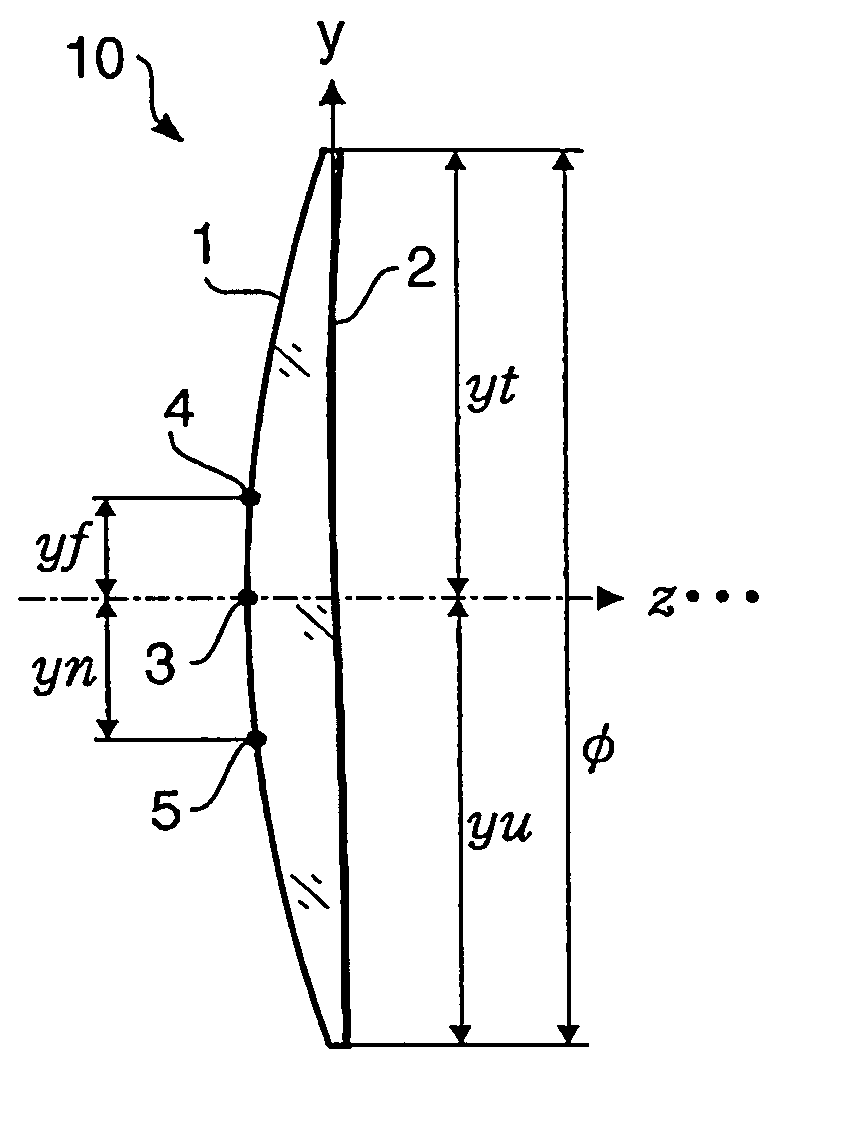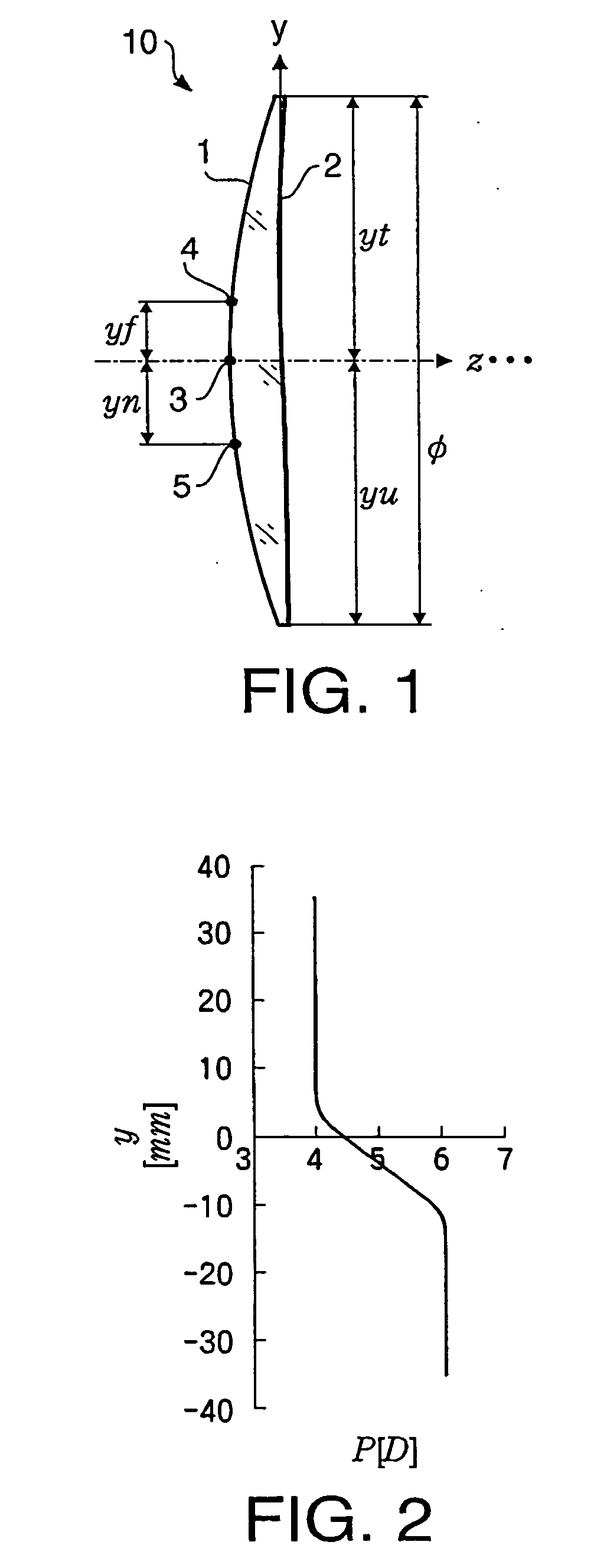Progressive power lens
a technology of progressive power and lens, applied in the direction of optics, instruments, optical parts, etc., can solve the problems of inability to achieve the reduction of lens thickness, the central portion of the lens becomes large, and the problem of arising as described below
- Summary
- Abstract
- Description
- Claims
- Application Information
AI Technical Summary
Benefits of technology
Problems solved by technology
Method used
Image
Examples
second example
[0093] A progressive power lens according to a second example of the embodiment will be described. The lens according to the second example is also referred to as the lens 10. A vertical cross-section of the lens 10 according to the second example is shown in FIG. 9. FIG. 10 is a graph illustrating change of a transmission power of the lens 10 according to the second example. FIG. 11 is a graph illustrating change of a sag amount z2(y) of the back surface 2 of the lens 10 according to the second example. FIG. 12 is a graph illustrating change of the curvature of the back surface 2 along the vertical cross-section. A numerical configuration of the lens 10 obtained from the graphs of FIGS. 9 to 12 is shown in Table 4.
TABLE 4Pf6.00[D]ADD3.00[D]Refractive index1.60D17.14[D]C2(yf)2.94[D]C2(yn)−1.51[D]z2(yt)0.75[mm]z2(yu)0.75[mm]z2(0)0.00[mm]
[0094] As shown in FIGS. 11 and 12, the back surface 2 has a convex shape portion protruding to an eye side in the vicinity of the near reference p...
third example
[0099] A progressive power lens according to a third example of the embodiment will be described. The lens according to the third example is also referred to as the lens 10. The lens 10 according to the third example has a property of correcting astigmatism. A vertical cross-section of the lens 10 according to the third example is shown in FIG. 17. FIG. 18 shows is a contour map representing a surface shape of the back surface 2 by contour lines drawn at intervals of 0.5 mm. In FIG. 18 (and in similar graphs of FIGS. 23, 38 and 44), an x-axis represents an axis which passes through an intersection point of the back surface 2 and the z-axis and is perpendicular to the y-axis and z-axis. That is, the x-axis defined as a horizontal line in a state where a wearer wears the lens.
[0100] A minimum curvature C2min, a maximum curvature C2max and a direction γ of the minimum curvature cross section, which are obtained when the back surface 2 is approximated by a toric surface, are shown in T...
fourth example
[0110] A progressive power lens according to a fourth example of the embodiment will be described. The lens according to the fourth example is also referred to as the lens 10. A vertical cross-section of the lens 10 according to the fouth example is shown in FIG. 27. The lens 10 according to the fourth example is configured such that both of the front and back surfaces are progressive surfaces. In this example, the first half of the addition power is provided by a surface power of the front surface 1, while the second half of the addition power and the correction for aberrations are provided by a progressive surface of the back surface 2.
[0111]FIG. 28 is a graph illustrating change of a transmission power of the lens 10 according to the fourth example. FIG. 29 is a graph illustrating a sag amount z2(y) of the back surface 2 of the lens 10 according to the fourth example. FIG. 30 is a graph illustrating change of the curvature of the front surface 1 along the vertical cross-section....
PUM
 Login to View More
Login to View More Abstract
Description
Claims
Application Information
 Login to View More
Login to View More - R&D
- Intellectual Property
- Life Sciences
- Materials
- Tech Scout
- Unparalleled Data Quality
- Higher Quality Content
- 60% Fewer Hallucinations
Browse by: Latest US Patents, China's latest patents, Technical Efficacy Thesaurus, Application Domain, Technology Topic, Popular Technical Reports.
© 2025 PatSnap. All rights reserved.Legal|Privacy policy|Modern Slavery Act Transparency Statement|Sitemap|About US| Contact US: help@patsnap.com



